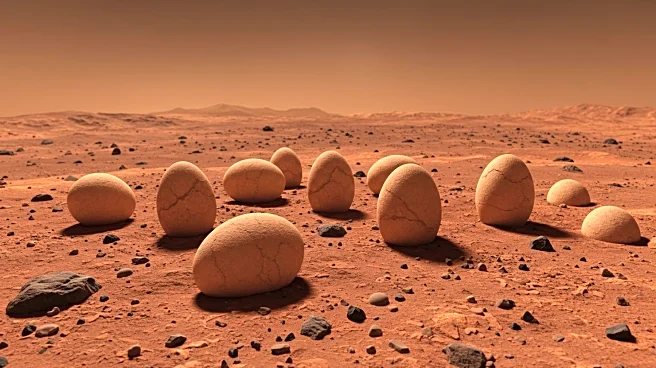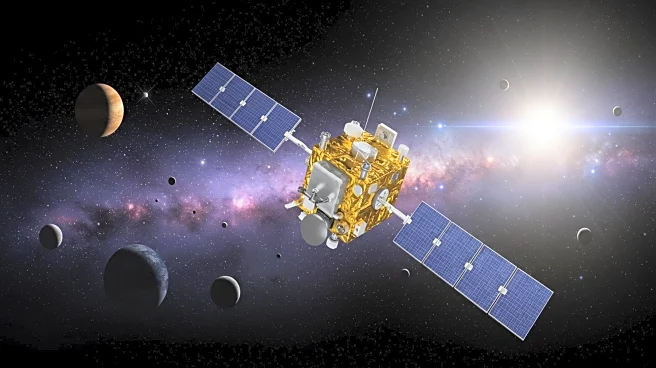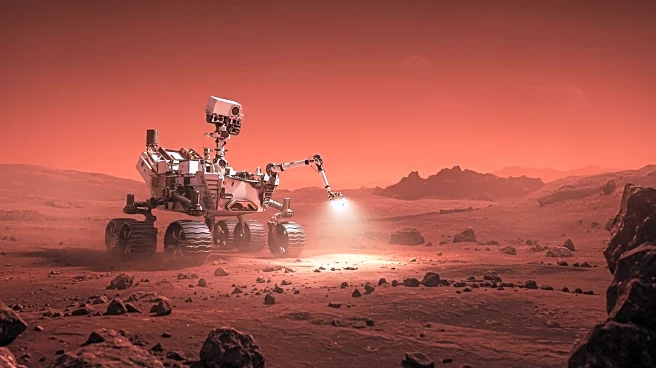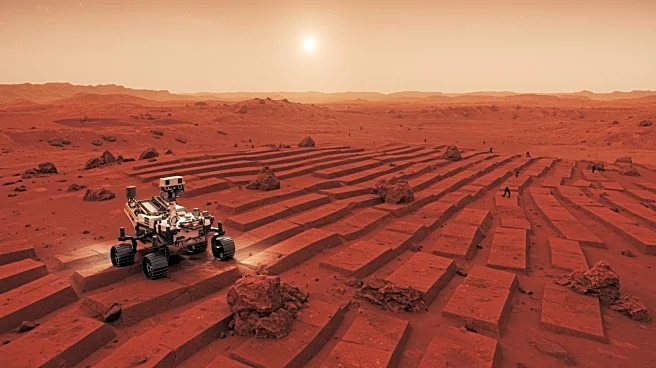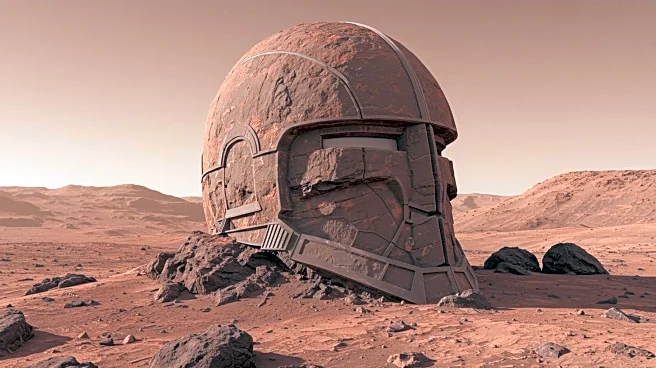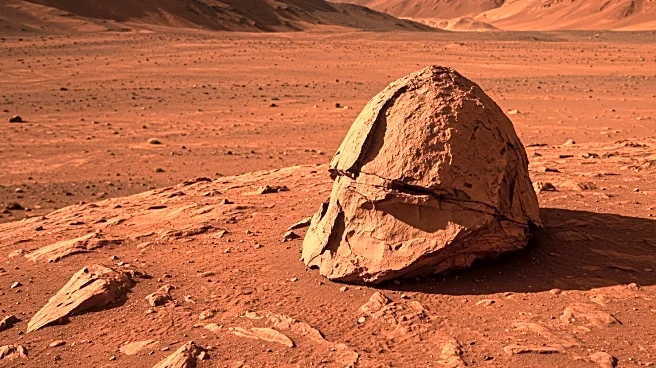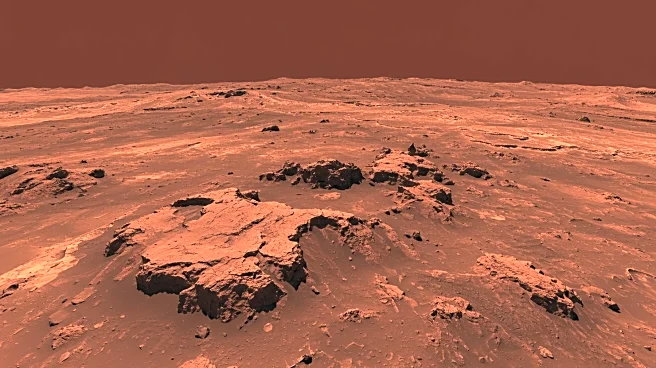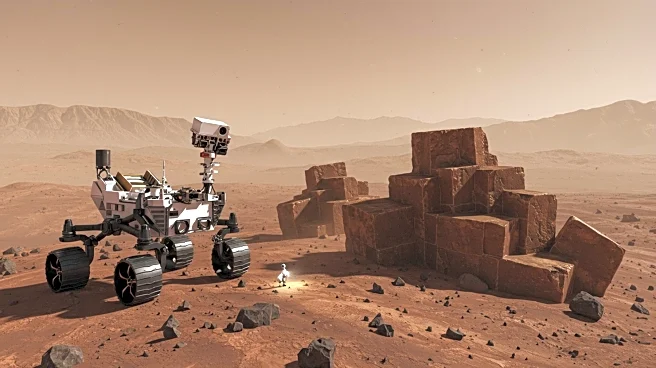What is the story about?
What's Happening?
NASA's Curiosity rover has made a fascinating discovery on Mars, uncovering rocks that resemble clusters of fossilized eggs or dinosaur nests. These formations, found in an area known as The Boxworks on Mount Sharp, are entirely natural but offer significant scientific intrigue. The rocks, characterized by their unique shapes and mineral diversity, may hold clues to Mars' dynamic environmental history, particularly how water once moved through the planet's crust. Curiosity's exploration of this region involves detailed imaging and chemical analysis, aiming to understand the geological processes that shaped these formations.
Why It's Important?
The discovery of these egg-shaped rocks on Mars is crucial for understanding the planet's geological and environmental history. The formations may provide insights into past water activity and climate conditions, which are essential for assessing Mars' habitability. By studying the mineral composition and structure of these rocks, scientists can infer the presence of ancient hydrothermal activity and potential microbial habitats. This research contributes to the broader goal of determining whether Mars could have supported life, offering valuable information for future exploration missions and the search for extraterrestrial life.
What's Next?
Curiosity will continue its exploration of The Boxworks, focusing on areas with unique textures and mineral compositions. The rover's mission includes examining veins and contact zones between different rock layers to study the chemistry of transition zones. These investigations may reveal more about Mars' climate evolution and the potential for past life. As Curiosity ascends Mount Sharp, it will encounter new stratigraphic layers, promising further insights into ancient Martian conditions. The rover's findings will inform future missions, including those aimed at returning samples to Earth for detailed analysis.
Beyond the Headlines
The discovery highlights the challenges and opportunities of robotic exploration on Mars. Curiosity's ability to navigate difficult terrain and conduct detailed scientific investigations demonstrates the advancements in space exploration technology. The findings also underscore the importance of interdisciplinary research, combining geology, chemistry, and astrobiology to unravel Mars' mysteries. As scientists continue to study these formations, they may uncover new evidence of Mars' potential to support life, shaping our understanding of the planet's history and its implications for future exploration.
AI Generated Content
Do you find this article useful?
